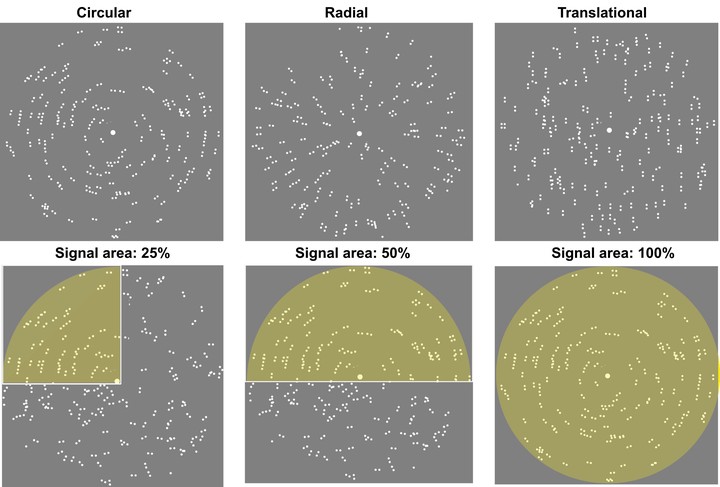Poster at AVA Christmas meeting
Poster at AVA Christmas meeting
 Stimuli used in the study
Stimuli used in the study
Neurons in early visual cortex are tuned to local stimulus features, i.e., orientation and spatial frequency. Behaviourally, however, the stimuli that are ecologically relevant are more complex. The visual system must therefore employ mechanisms that combine these localised outputs. Previous studies addressed this question by measuring area summation for various types of Glass pattern, in which the stimulus array was divided into various sectors of increasing size. Linear summation predicts that the decrease in thresholds with increasing signal area follows a power-law function with a (log-log) slope of -1.0. This was previously found for circular Glass patterns, suggesting that the information in these patterns is linearly summed across the entire display, and was taken as evidence for specialized global detectors for circular patterns. Here we present results from summation experiments using static and dynamic Glass patterns with radial, circular, and translational structure. We measured detection thresholds as a function of signal area (25%, 50%, 100%) with the remaining area containing orientation noise. Results show that thresholds for dynamic Glass patterns were lower than for static ones across all pattern types and signal areas. In agreement with Schmidtmann et al. 2015 J Vis 15(16):6 1-19, we do not find superior sensitivities for detecting circular structure. Importantly, summation strength never reached values close to linear summation (-1) for static or dynamic patterns, implying that probability summation is the most likely basis for the detection of circular, radial, and translational Glass patterns.
Access the poster [here].